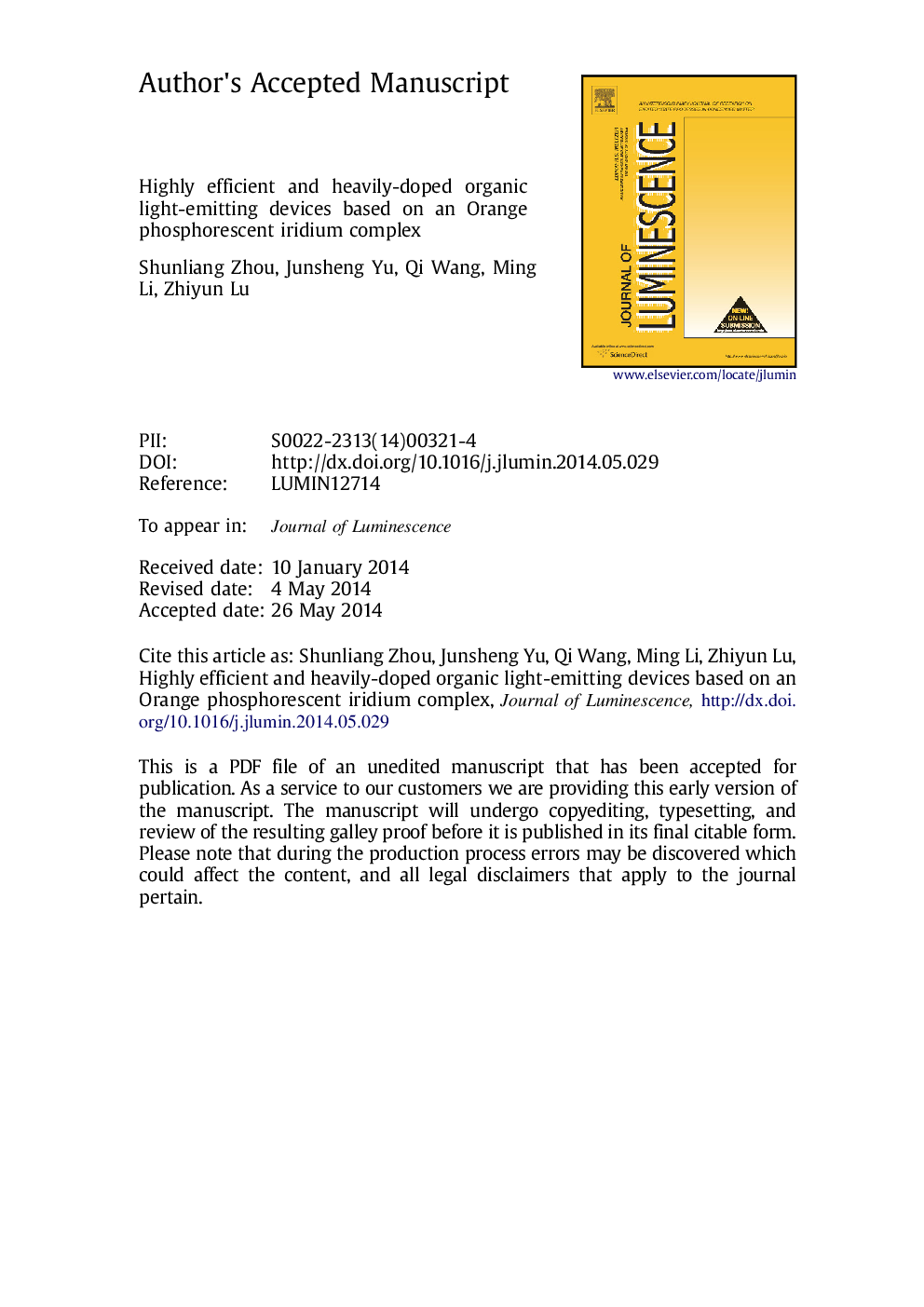| Article ID | Journal | Published Year | Pages | File Type |
|---|---|---|---|---|
| 5399806 | Journal of Luminescence | 2014 | 20 Pages |
Abstract
Heavily doped and highly efficient phosphorescent organic light-emitting devices (PhOLEDs) had been fabricated by utilizing an orange iridium complex, bis[2-(3â²,5â²-di-tert-butylbiphenyl-4-yl)benzothiazolato-N,C2׳]iridium(III) (acetylacetonate) [(tbpbt)2Ir(acac)], as a phosphor. When the doping concentration of [(tbpbt)2Ir(acac)] reached as high as 15 wt%, the PhOLEDs exhibited a power efficiency, current efficiency, and external quantum efficiency of 24.5 lm/W, 32.1 cd/A, 15.7%, respectively, implying a promising quenching-resistant characteristics of this novel phosphor. Furthermore, the efficient white PhOLEDs had been obtained by employing (tbpbt)2Ir(acac) as a self-host orange emitter, indicating that (tbpbt)2Ir(acac) could serve as a promising phosphor to fabricate white organic light-emitting devices with simplified manufacturing process.
Related Topics
Physical Sciences and Engineering
Chemistry
Physical and Theoretical Chemistry
Authors
Shunliang Zhou, Qi Wang, Ming Li, Zhiyun Lu, Junsheng Yu,
